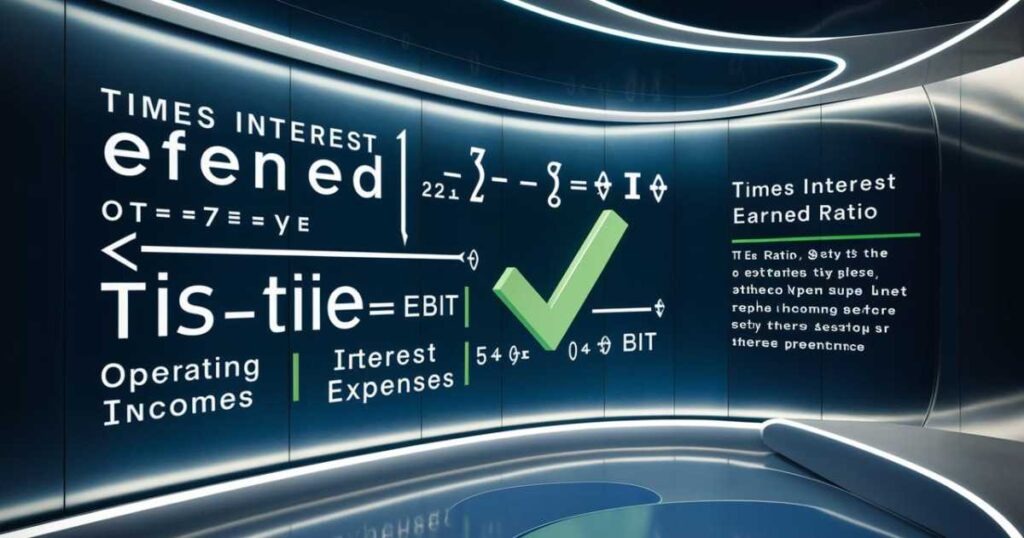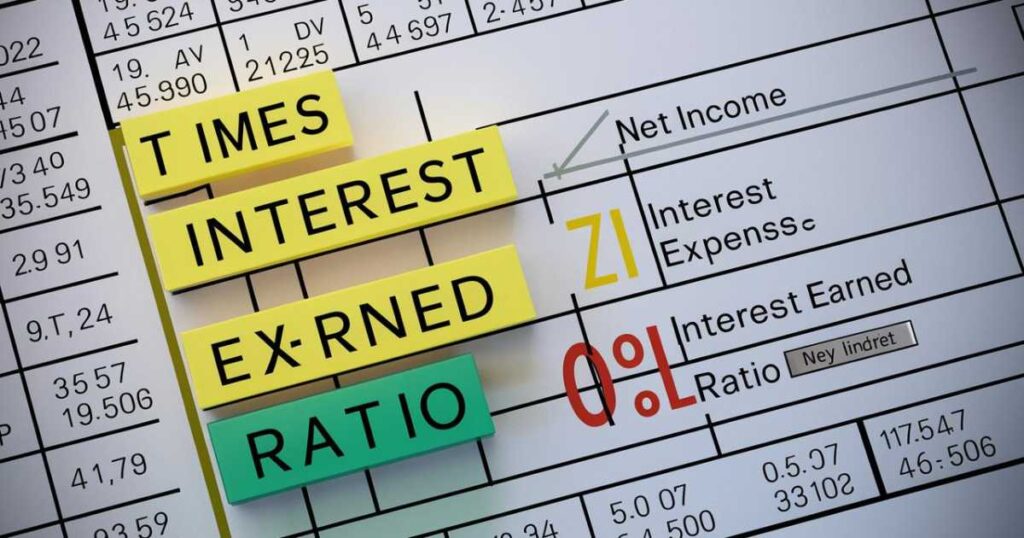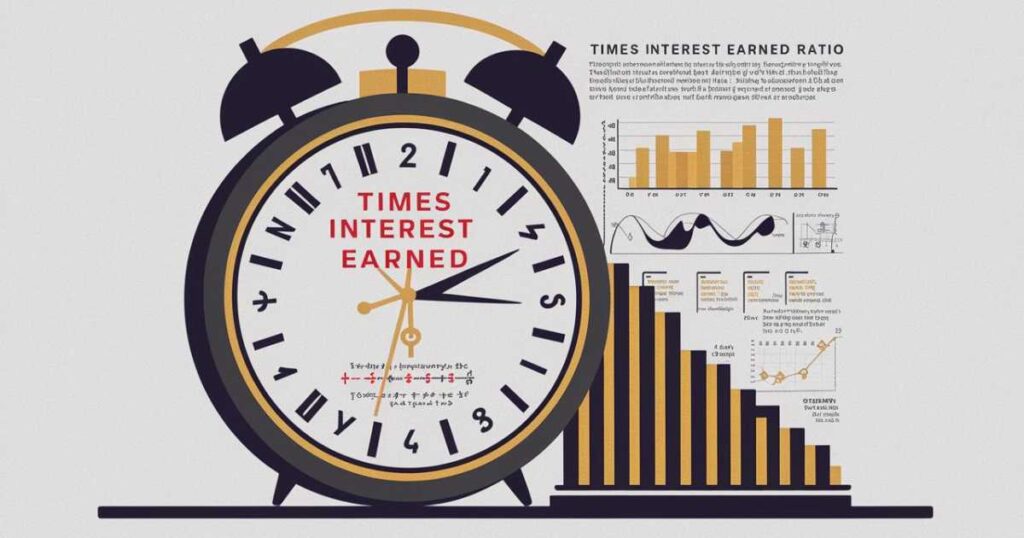The Times Interest Earned Ratio (TIE) is a crucial financial metric that measures a company’s ability to meet its interest obligations. It compares a company’s operating income (EBIT) to its interest expenses, providing insight into its financial health and debt servicing capacity.
Wondering how businesses stay afloat while managing debt? The answer lies in the Times Interest Earned Ratio. This important ratio holds the key to understanding a company’s financial stability and creditworthiness.
Analyzing the Times Interest Earned Ratio is essential for businesses, investors, and lenders alike. It reveals a company’s capacity to handle its debt obligations, making it a critical factor in assessing its overall financial performance and long-term viability.
What is the Times Interest Earned Ratio?
The Times Interest Earned Ratio (TIE) is a crucial metric in the world of corporate finance. It helps assess a company’s ability to meet its debt obligations and interest expenses. This ratio indicates a business’s financial health and its creditworthiness to lenders and investors.
In simple terms, the Times Interest Earned Ratio measures how many times a company’s operating income (EBIT) can cover its interest payments. Maintaining a healthy TIE ratio is essential for any company looking to secure financing, manage financial risk, and demonstrate its debt servicing ability.
Understanding the Times Interest Earned Ratio is crucial for analyzing a company’s capital structure, financial leverage, and overall corporate financial health. This metric provides valuable insights into a business’s profitability, liquidity, and its capacity to handle debt obligations. By closely monitoring the TIE ratio, stakeholders can gain a clearer picture of a company’s solvency and its ability to generate sufficient cash flow to service its debt.
How to Calculate Times Interest Earned Ratio (TIE)
To calculate the Times Interest Earned Ratio, you’ll need to gather two key pieces of information from a company’s financial statements: Earnings Before Interest and Taxes (EBIT) and Interest Expenses. The formula for the TIE ratio is straightforward:
Times Interest Earned Ratio (TIE) = EBIT / Interest Expenses
Let’s break down the formula step by step:
- EBIT (Earnings Before Interest and Taxes): This represents a company’s operating income or the amount of profit the business generates from its core operations, before accounting for interest payments and taxes.
- Interest Expenses: These are the costs a company incurs for borrowing money, such as interest on loans, bonds, or other debt instruments.
By dividing a company’s EBIT by its Interest Expenses, you can determine how many times its operating income can cover the interest it owes. This ratio is a crucial indicator of a company’s debt servicing ability and its overall financial leverage.
Times Interest Earned Ratio Formula (TIE)

The Times Interest Earned Ratio (TIE) formula is as follows:
TIE = EBIT / Interest Expenses
Where:
- EBIT (Earnings Before Interest and Taxes) represents a company’s operating income, or the profit generated from its core business activities, before accounting for interest payments and taxes.
- Interest Expenses are the costs a company incurs for borrowing money, such as interest on loans, bonds, or other debt instruments.
By calculating the TIE ratio, you can determine how many times a company’s operating income can cover its interest expenses. This metric is essential for assessing a business’s financial health, creditworthiness, and its ability to manage its debt obligations.
What is a Good TIE Ratio?
A good Times Interest Earned Ratio can vary depending on the industry and the specific company’s financial situation. However, as a general guideline:
- TIE Ratio > 3: This is typically considered a strong ratio, indicating that the company has a substantial debt servicing ability and can comfortably cover its interest payments.
- TIE Ratio between 1.5 and 3: This is generally seen as an acceptable or satisfactory range, suggesting the company has a reasonable capacity to meet its interest obligations.
- TIE Ratio < 1.5: A ratio below 1.5 is often considered poor, indicating the company may be struggling to generate enough operating income to cover its debt obligations, which could raise concerns about its financial stability and creditworthiness.
It’s important to note that the interpretation of the TIE ratio should be done in the context of the industry, the company’s capital structure, its financial leverage, and other relevant financial ratios, such as the Debt-to-Equity Ratio and the Fixed Charge Coverage Ratio (FCCR). A comprehensive financial analysis is essential to fully understand a company’s debt servicing ability and overall financial health.
MORE INFORMATION: AOCI: How It Impacts Your Business’s Financial Health
Times Interest Earned Ratio Calculator
To make the calculation of the Times Interest Earned Ratio more accessible, many online TIE ratio calculators are available. These tools allow you to input the necessary financial data, such as EBIT and Interest Expenses, and quickly generate the TIE ratio for a company.
Using a Times Interest Earned Ratio calculator can be particularly useful for:
- Quick Analysis: Easily and quickly assess a company’s debt servicing ability without the need for manual calculations.
- Comparison: Compare the TIE ratios of different companies or track a single company’s TIE ratio over time.
- Financial Modeling: Incorporate the TIE ratio into financial models and projections to evaluate the impact of changes in a company’s capital structure or operating performance.
By leveraging these online calculators, analysts, investors, and business owners can quickly obtain the TIE ratio and use it as a valuable tool in their financial risk assessment and credit risk analysis processes.
Income Statement Assumptions
To accurately calculate the Times Interest Earned Ratio (TIE), it’s essential to have a clear understanding of the key elements from a company’s income statement. The most important assumptions include:
- Earnings Before Interest and Taxes (EBIT): This represents the company’s operating income, which is the profit generated from its core business activities, before accounting for interest payments and taxes.
- Interest Expenses: These are the costs the company incurs for borrowing money, such as interest on loans, bonds, or other debt instruments.
Ensuring that these income statement components are properly identified and calculated is crucial for obtaining an accurate TIE ratio, which can then be used to assess the company’s debt servicing ability and financial health.
Operating Income Calculation (EBIT)
The calculation of Earnings Before Interest and Taxes (EBIT) is a critical step in determining the Times Interest Earned Ratio (TIE). EBIT represents a company’s operating income, which is the profit generated from its core business activities, before accounting for interest payments and taxes.
To calculate EBIT, you’ll need to start with the company’s total revenue and then subtract its total expenses, excluding interest and taxes. The formula for EBIT is as follows:
EBIT = Total Revenue – Total Expenses (excluding interest and taxes)
It’s important to carefully review the income statement and identify the appropriate revenue and expense items to ensure an accurate EBIT calculation. Properly calculating EBIT is essential for obtaining a reliable TIE ratio, which is a key indicator of a company’s debt servicing ability and financial leverage.
Times Interest Earned Ratio Calculation Example

Let’s consider a hypothetical example to illustrate the calculation of the Times Interest Earned Ratio (TIE):
Assume a company has the following financial information:
- Total Revenue: $1,000,000
- Total Expenses (excluding interest and taxes): $800,000
- Interest Expenses: $50,000
First, we need to calculate the company’s Earnings Before Interest and Taxes (EBIT): EBIT = Total Revenue – Total Expenses (excluding interest and taxes) EBIT = $1,000,000 – $800,000 = $200,000
Now, we can calculate the Times Interest Earned Ratio (TIE): TIE = EBIT / Interest Expenses TIE = $200,000 / $50,000 = 4.0
In this example, the company’s Times Interest Earned Ratio is 4.0, which suggests that its operating income is four times greater than its interest expenses. This is generally considered a strong TIE ratio, indicating the company has a substantial debt servicing ability and can comfortably cover its interest payments.
By analyzing the TIE ratio, stakeholders can gain valuable insights into the company’s financial health, creditworthiness, and its capacity to manage its debt obligations.

Howdy, editor at FinanceEon.com, brings over a decade of financial journalism experience. He ensures accuracy and insightful analysis, guiding a team on market trends and investment strategies.







